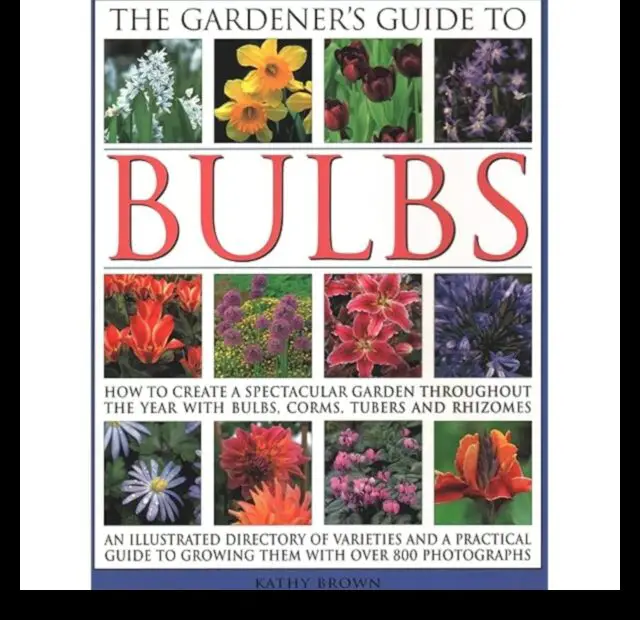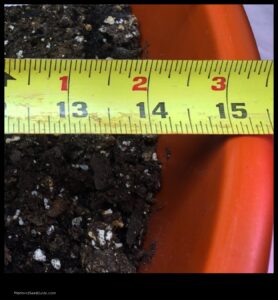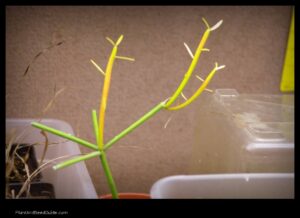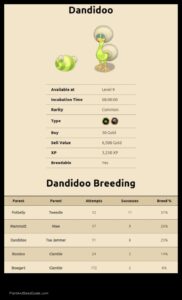
How to plant corms
Corms are a type of plant storage organ that is similar to a bulb.
Corms are planted in the spring, and they will typically flower in the summer or fall.They are typically round or oval in shape, and they contain a reserve of nutrients that the plant can use to grow..
There are a few things to keep in mind when planting corms. First, make sure that the corms are healthy and free of any damage. Second, choose a location that has well-drained soil and full sun. Third, plant the corms at a depth of about twice their diameter.
Once the corms are planted, water them regularly and fertilize them monthly. You can also add a layer of mulch around the plants to help retain moisture and protect them from the cold.
Corms are relatively easy to grow, and they can be a beautiful addition to any garden. With a little care, you can enjoy their beautiful flowers for years to come.
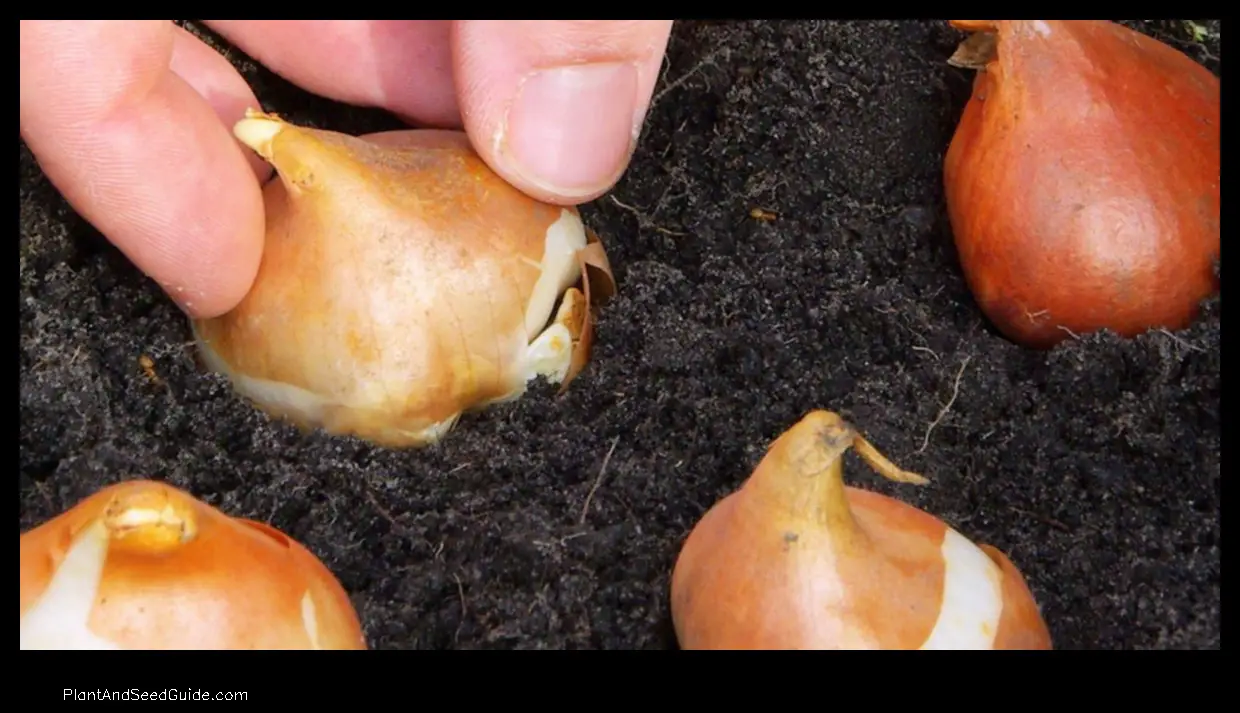
How to choose the right corms for your climate
When choosing corms for your garden, it is important to consider the climate in your area.
If you live in a colder climate, you may want to choose corms that are specifically adapted for your area.Corms are typically hardy in USDA zones 7-11, but some varieties can be grown in colder climates..
You should also consider the size of the corms when choosing them. Larger corms will produce larger plants, but they may also take longer to grow. Smaller corms will produce smaller plants, but they will also grow faster.
Finally, you should consider the color of the corms when choosing them. Corms come in a variety of colors, including white, yellow, pink, and purple. You can choose corms that will complement the other plants in your garden, or you can choose corms that will create a pop of color.
How to prepare the soil for planting corms
Before planting corms, you will need to prepare the soil. The soil should be well-drained and fertile. If your soil is not well-drained, you can add sand or gravel to improve drainage. If your soil is not fertile, you can add compost or fertilizer.
You should also till the soil to a depth of about 12 inches. This will help to loosen the soil and make it easier for the corms to root.

How to plant corms
Once the soil is prepared, you can plant the corms. To plant a corm, dig a hole that is about twice the diameter of the corm. Place the corm in the hole, and then cover it with soil.
You should plant the corms about 6 inches apart. If you are planting multiple corms, space them about 12 inches apart.
After planting the corms, water them well. You should water the corms regularly until they start to grow.
Where to plant corms
Corms can be planted in a variety of locations, including gardens, pots, and containers. If you are planting corms in a garden, choose a location that has well-drained soil and full sun. If you are planting corms in a pot or container, choose a pot that is at least 12 inches deep and has drainage holes.
When planting corms in a pot or container, fill the pot with potting soil. Then, plant the corms about 6 inches apart. Water the corms well, and place the pot in a sunny location.
How deep to plant corms
Corms should be planted at a depth of about twice their diameter. This means that if the corm is 2 inches in diameter, you should plant it about 4 inches deep.
It is important to plant corms at the proper depth so that they have enough room to grow. If you plant the corms too shallow, they may dry out. If you plant the corms too
| Feature | Description |
|---|---|
| Corms | A corm is a thickened, underground stem that stores food and nutrients. Corms are used to grow new plants. |
| Planting corms | Corms can be planted in the spring or fall. They should be planted in well-drained soil that is rich in organic matter. |
| Corm care | Corms need to be watered regularly, but they should not be overwatered. They also need to be fertilized regularly. |
| Corm propagation | Corms can be propagated by dividing them or by planting cormlets. |
| Corm gardening | Corms can be grown in a variety of gardens, including flower gardens, vegetable gardens, and herb gardens. |
Corms are a type of plant storage organ that is found in many different plants, including crocuses, gladioli, and dahlias. Corms are similar to bulbs, but they are solid instead of hollow. They are also more closely related to roots than to bulbs.
Corms store nutrients and energy for the plant to use during the growing season.
When the weather warms up in the spring, the corm will send up a new shoot and begin to grow new leaves and flowers.They also help the plant to survive cold weather..
Corms are easy to grow and propagate. They can be planted in the fall or early spring. They will need to be planted in well-drained soil that is rich in organic matter. Corms should be planted at a depth of about 2 inches.
Corms will need to be watered regularly, especially during the growing season. They will also need to be fertilized every few weeks. Corms can be harvested in the fall after the leaves have died back.
3. When to plant corms
The best time to plant corms depends on the type of corm and your climate. For example, spring-flowering corms, such as crocuses and daffodils, should be planted in the fall, while summer-flowering corms, such as gladiolus and dahlias, should be planted in the spring.
Here are some general guidelines for when to plant corms:
- Spring-flowering corms: Plant in the fall, 6-8 weeks before the first frost.
- Summer-flowering corms: Plant in the spring, 4-6 weeks before the last frost.
- Tropical corms: Plant indoors in the early spring, and transplant outdoors after the last frost.
It is important to note that the specific planting time for a particular corm may vary depending on your climate. For example, in colder climates, you may need to plant spring-flowering corms earlier in the fall, and summer-flowering corms later in the spring.
If you are unsure about when to plant a particular corm, it is best to err on the side of caution and plant it earlier rather than later. This will give the corm more time to establish itself before the weather gets too cold or hot.
How to plant corms
Cultivating corms is a relatively simple process, but there are a few things you need to know in order to get the best results.
First, you need to choose the right corms for your climate. Some corms, such as dahlias and gladiolus, are cold-hardy and can be planted in the fall, while others, such as cannas and calla lilies, are frost-tender and should be planted in the spring.
Once you’ve chosen your corms, you need to prepare the soil. Corms need well-drained soil that is rich in organic matter. If your soil is not well-drained, you can add compost or sand to improve drainage.
To plant corms, dig a hole that is twice as deep as the corm and wide enough to accommodate the roots. Place the corm in the hole, with the pointed end facing up. Cover the corm with soil and water thoroughly.
Cultivating corms is a rewarding experience, and it is a great way to add beautiful blooms to your garden. With a little care, you can enjoy your corms for many years to come.
5. Where to plant corms
Climbing corms should be planted in a sheltered spot, such as against a wall or fence. They will need plenty of support to climb, so make sure to provide a trellis or other structure.
Bulb corms can be planted in a sunny spot or in partial shade. They will need well-drained soil that is rich in organic matter.
Tuber corms should be planted in a sunny spot. They will need well-drained soil that is rich in organic matter.
Rhizome corms should be planted in a shady spot. They will need moist soil that is rich in organic matter.
6. How deep to plant corms
Croms should be planted so that the top of the corm is just below the soil surface. If you plant the corm too deep, it will not be able to get enough sunlight and will not grow properly. If you plant the corm too shallow, it will be exposed to the elements and may dry out or be damaged by pests.
The best way to determine how deep to plant a corm is to read the planting instructions that come with the corm. If there are no planting instructions, you can use the following rule of thumb:
Plant the corm so that the top of the corm is just below the soil surface.
For example, if you are planting a corm that is 2 inches in diameter, you would plant it so that the top of the corm is 1 inch below the soil surface.
It is important to note that the depth at which you plant a corm will also depend on the climate in your area. In colder climates, you will need to plant the corm deeper so that it is protected from the cold. In warmer climates, you can plant the corm shallower so that it gets more sunlight.
How much water to give corms
Corms need to be watered regularly, but not too much. The soil should be kept moist, but not soggy. If the soil is too wet, the corms will rot. If the soil is too dry, the corms will shrivel up and die.
The amount of water you need to give your corms will depend on the climate and the type of corm.
You should also water your corms more often when they are actively growing and less often when they are dormant.In general, you should water your corms more often in hot, dry climates and less often in cool, wet climates..
To check if your corms need water, stick your finger into the soil. If the soil is dry to the touch, it’s time to water your corms.
You can also water your corms by using a moisture meter. Moisture meters measure the amount of moisture in the soil, so you can be sure that your corms are getting the right amount of water.
How to fertilize corms
Fertilizing corms is important to help them grow and produce healthy flowers. The best time to fertilize corms is in the spring, when they are starting to grow new shoots. You can use a balanced fertilizer, such as 10-10-10, or a fertilizer specifically formulated for corms. Apply the fertilizer according to the package directions.
You can also fertilize corms during the summer, but be careful not to overfertilize, as this can damage the corms. If you are not sure how much fertilizer to use, it is better to err on the side of caution and use less fertilizer than more.
Fertilizing corms can help them to produce more flowers and to grow larger. It is an important part of caring for corms, and it will help them to thrive.
How to protect corms from pests and diseases
Corms are susceptible to a variety of pests and diseases, including aphids, mites, beetles, borers, and fungi. To protect your corms from these pests and diseases, you can take the following steps:
- Inspect your corms regularly for signs of pests or diseases.
- Remove any affected corms immediately.
- Apply pesticides or fungicides to your corms as directed on the label.
- Rotate your crops each year to help reduce the incidence of pests and diseases.
- Grow your corms in well-drained soil.
- Water your corms regularly, but do not overwater them.
By following these steps, you can help protect your corms from pests and diseases and ensure a successful harvest.
FAQ
Q: What are corms?
A: Corms are a type of underground stem that stores food and nutrients. They are similar to bulbs, but they are solid instead of hollow. Corms are used to propagate plants, and they can be planted in the spring or fall.
Q: When to plant corms?
A: Corms can be planted in the spring or fall. Spring-planted corms will bloom in the summer, while fall-planted corms will bloom in the spring.
Q: How to plant corms?
A: To plant corms, dig a hole that is twice as deep as the corm. Place the corm in the hole, with the pointed end up. Cover the corm with soil and water well.
- Wild Rose Country: Exploring Untamed Beauty - July 15, 2024
- Wildflower Nursery Decor: Bringing Nature Indoors - July 15, 2024
- Young Sprout of Grass: Nurturing New Life - July 15, 2024
